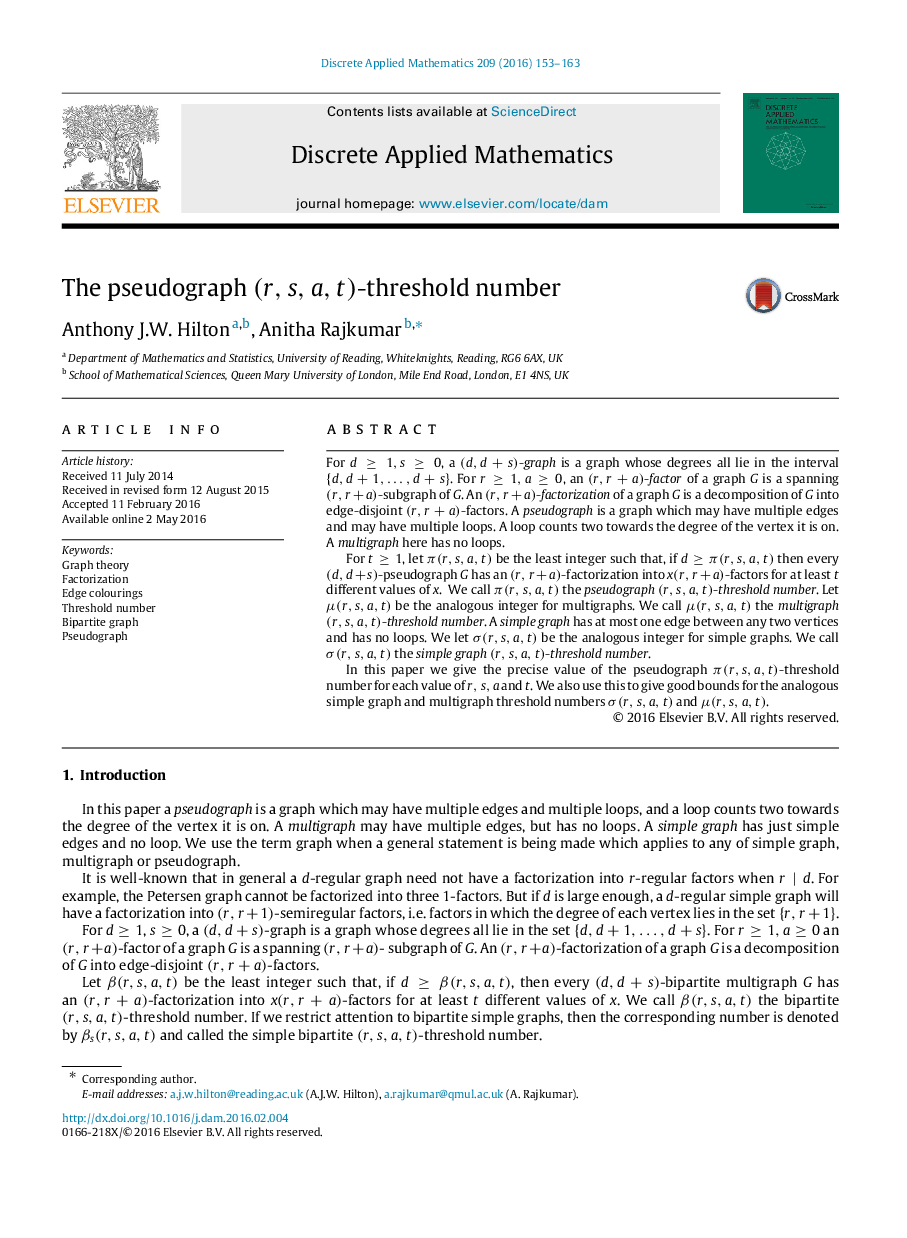| Article ID | Journal | Published Year | Pages | File Type |
|---|---|---|---|---|
| 418468 | Discrete Applied Mathematics | 2016 | 11 Pages |
For d≥1,s≥0d≥1,s≥0, a (d,d+s)(d,d+s)-graph is a graph whose degrees all lie in the interval {d,d+1,…,d+s}{d,d+1,…,d+s}. For r≥1,a≥0r≥1,a≥0, an (r,r+a)(r,r+a)-factor of a graph GG is a spanning (r,r+a)(r,r+a)-subgraph of GG. An (r,r+a)(r,r+a)-factorization of a graph GG is a decomposition of GG into edge-disjoint (r,r+a)(r,r+a)-factors. A pseudograph is a graph which may have multiple edges and may have multiple loops. A loop counts two towards the degree of the vertex it is on. A multigraph here has no loops.For t≥1t≥1, let π(r,s,a,t)π(r,s,a,t) be the least integer such that, if d≥π(r,s,a,t)d≥π(r,s,a,t) then every (d,d+s)(d,d+s)-pseudograph GG has an (r,r+a)(r,r+a)-factorization into xx(r,r+a)(r,r+a)-factors for at least tt different values of xx. We call π(r,s,a,t)π(r,s,a,t) the pseudograph (r,s,a,t)(r,s,a,t)-threshold number . Let μ(r,s,a,t)μ(r,s,a,t) be the analogous integer for multigraphs. We call μ(r,s,a,t)μ(r,s,a,t) the multigraph (r,s,a,t)(r,s,a,t)-threshold number. A simple graph has at most one edge between any two vertices and has no loops. We let σ(r,s,a,t)σ(r,s,a,t) be the analogous integer for simple graphs. We call σ(r,s,a,t)σ(r,s,a,t) the simple graph (r,s,a,t)(r,s,a,t)-threshold number.In this paper we give the precise value of the pseudograph π(r,s,a,t)π(r,s,a,t)-threshold number for each value of r,s,ar,s,a and tt. We also use this to give good bounds for the analogous simple graph and multigraph threshold numbers σ(r,s,a,t)σ(r,s,a,t) and μ(r,s,a,t)μ(r,s,a,t).
